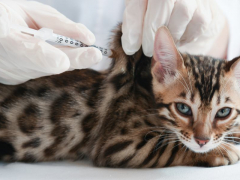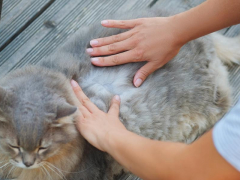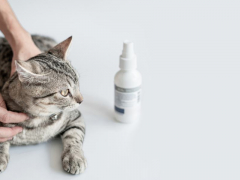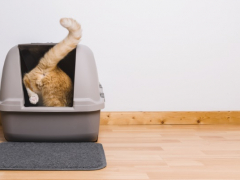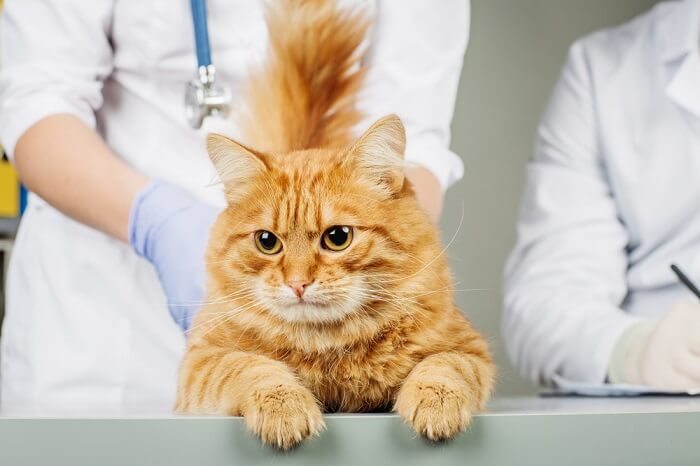
Fluoxetine, also commonly known by the brand name Prozac, is a medication commonly used in veterinary medicine to treat behavioral disorders, including inappropriate urination, in cats.
In this article, you’ll learn how fluoxetine works, situations where it is often prescribed, potential side effects and drug interactions, and some frequently asked questions.
Fluoxetine for Cats Overview

About Fluoxetine for Cats
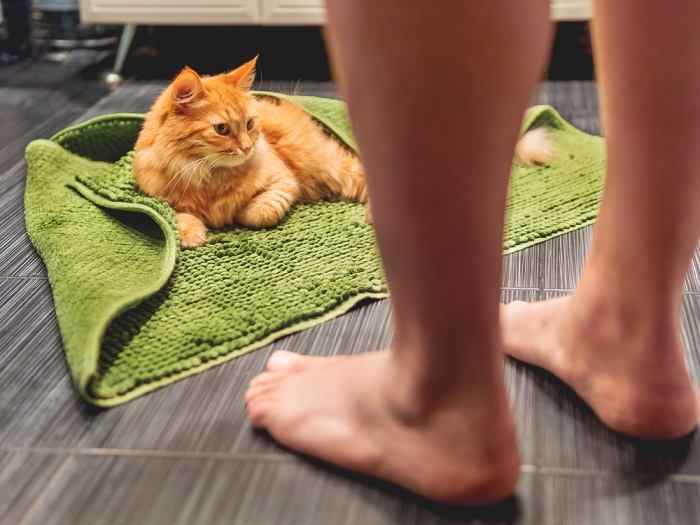
Fluoxetine is classified as a selective serotonin reuptake inhibitor (SSRI) antidepressant.
Serotonin is a principal hormone in the body that acts as a neurotransmitter in the brain. It is the main transmitter involved with stabilizing mood, well-being, and happiness.
Also Read: 6 Subtle Signs Your Cat Loves You
SSRIs act to increase serotonin levels in the brain by preventing its reuptake or reabsorption, keeping it in circulation.
Fluoxetine is very selective in that it has little effect on other neurotransmitters in the brain, primarily just serotonin.
What Does Fluoxetine Do for Cats?
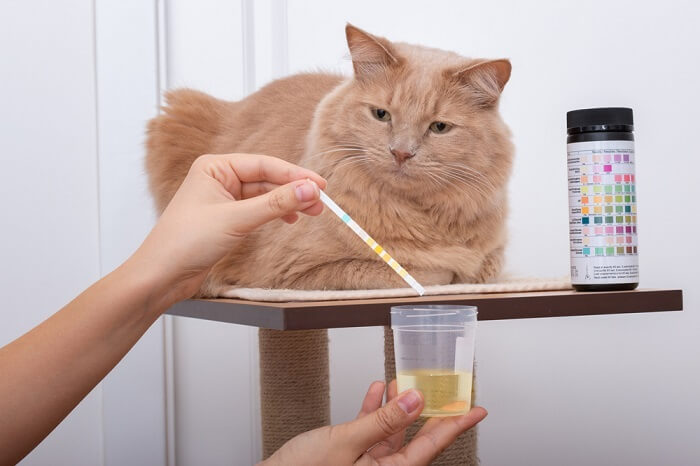
Generally, fluoxetine may be used for a variety of behavioral disorders, including aggression, obsessive-compulsive behaviors, separation anxiety, and inappropriate elimination.
Cats are very complex creatures, as all kitty parents know, and they can exhibit some very odd behaviors interacting with their human counterparts as well as other pets in the home.
It is important to rule out medical causes of unusual behaviors, like underlying pain as a cause of erratic behavior or aggression, or infection, bladder stones, or sterile inflammation as a cause of unwanted urinary behavior.
But generally, if medical causes have been eliminated, and some non-prescription behavioral approaches may have been tried, fluoxetine is often a first choice for many behavioral conditions in cats. This is especially true for cases of inappropriate urination.
Side Effects of Fluoxetine for Cats
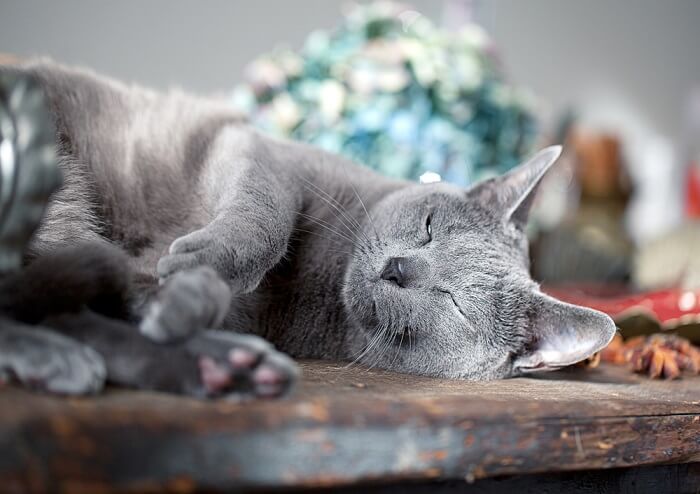
While many cats may experience improved, calm behavior as desired, rarely cats may exhibit worsening behavior changes like anxiety, hyperactivity, irritability and difficulty sleeping.
In cats, fluoxetine can have a number of potential adverse effects.
The most commonly reported effects can be drowsiness and a decrease in appetite.
While many cats may experience improved, calm behavior as desired, rarely cats may exhibit worsening behavior changes like anxiety, hyperactivity, irritability, difficulty sleeping, and undesired changes in elimination patterns.
Cats can also develop GI side effects like poor appetite, nausea, vomiting, or diarrhea. All potential side effects are not universal, but vary greatly from cat to cat in terms of what may occur and to what degree.
Fluoxetine can have interactions with many medications, especially other anxiety medications, sedatives, and some pain medications. Some drug interactions, especially when fluoxetine is used with a monoamine oxidase inhibitor (MAOI) like selegiline, may lead to serotonin syndrome, which is described more fully below. Always make your veterinarian aware of any other medications your cat is taking.
If your cat uses a flea/tick collar, make sure to discuss this with your vet prior to starting fluoxetine.
Fluoxetine should be used with caution in diabetic patients, as its use with insulin may alter insulin requirements. It may be a common recommendation after starting fluoxetine in a diabetic cat, to have blood glucose levels rechecked to see if any adjustments need to be made.
Fluoxetine is primarily metabolized by the liver, and so should be used cautiously in any cat with chronic or advanced liver disease.
Overdoses of fluoxetine can be very concerning. While increasing serotonin in the body can be helpful with some behavioral disorders, increasing it too much can lead to severe side effects including vomiting, excessive drooling, diarrhea, agitation, tremors, and seizures. This is called serotonin syndrome and requires immediate veterinary care if it occurs.
If you are ever concerned that your kitty may have developed side effects while taking fluoxetine, or if you think an overdose or medication interaction may have occurred, make sure to contact your veterinarian, the ASPCA Animal Poison Control Center (1-888-426-4435), or Pet Poison Helpline (1-855-764-7661) for further advice.
Fluoxetine for Cats Dosage
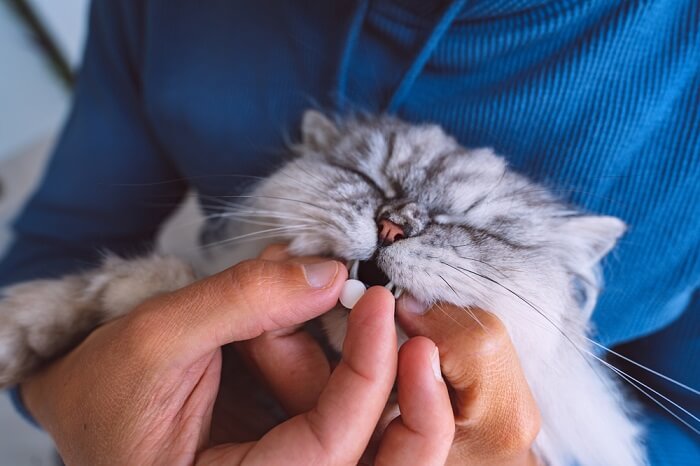
Fluoxetine is generally dosed once daily and when first started should be continued for at least 4 to 8 weeks as long as no concerning side effects are seen.
While fluoxetine is labeled for use in dogs as the brand Reconcile, there is no FDA approved product for cats, so it is used in an extra-label manner in kitties.
Starting doses for cats tend to be low and this medication has a narrow margin of safety, so a dosage for your cat is best determined by your cat’s attending veterinarian.
Doses as low as 15-20mg for an average 10 lb cat have demonstrated signs of toxicity, so under no circumstances should a human dose of Prozac be shared with a cat in the home.
Fluoxetine is generally dosed once daily and when first started should be continued for at least 4 to 8 weeks as long as no concerning side effects are seen, to fully determine if the drug is working to address a behavioral problem.
It is extremely important to not discontinue this medication abruptly. If your cat is exhibiting signs of undesired behavior or side effects, make sure to contact your veterinarian first. If your cat has been on fluoxetine for several weeks and no improvements have been seen, it is very important to contact your vet to discuss, as weaning a kitty slowly off the medication is typical when looking to discontinue it.
It’s helpful to note that because cats require smaller doses of fluoxetine, that having the medication ordered through a compounding pharmacy, sometimes in a small treat or liquid form, is common. It’s important to be aware that the transdermal (skin application) form has been found in studies to be much less effective however for proper dosing.
Conclusion
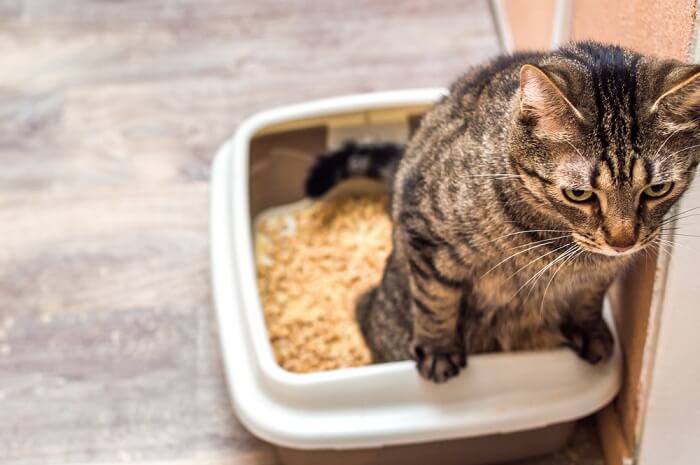
Fluoxetine can be a very helpful and effective medication for treating cats for a variety of behavioral disorders, including inappropriate urination. But because side effects and drug interactions can occur, and because overdoses can be concerning, it’s very important for fluoxetine to only be used for cats when appropriately prescribed by an attending veterinarian.
Drug Dosing Disclaimer: We are only able to provide doses for medications that are FDA approved for use in cats and only as the label guidelines dictate. For medications that are used off-label we can only provide guidelines and safety information for use. Safe and appropriate dosing for off-label medications can only be determined by a primary care veterinarian.
We encourage you to work with your veterinarian to determine if a particular medication is appropriate for your cat. Changing or adjusting a dose for your cat on your own without consulting with a veterinarian can carry risk. We do not encourage use of medications prescribed for human use in pets without first consulting with a primary care veterinarian.
